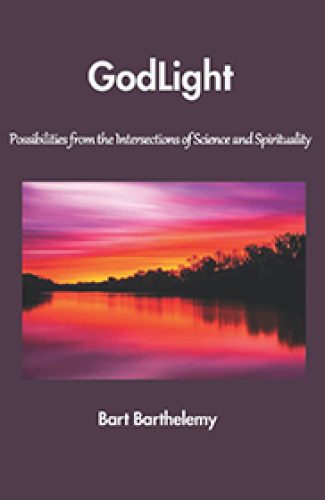
Robert Barthelemey
About the Book
This book is about the intersections of science and spirituality. It was initially motivated by my lifelong observation that light plays such an important role in many aspects of science. But the real stimulus to write this book was the repeated number of spiritual learnings and experiences which involve light that I have had in recent years. Because of this, I began to explore the significance of light in both disciplines. The result of this investigation led to the concept of GodLight, the Light of God, that I believe is foundational to both science and spirituality. Science is the study of the nature and behavior of natural things and the knowledge that we obtain about them. Most readers of this book will likely have a general knowledge of science and how our world works.
The fundamental concepts in science are learned during our early education and greatly enhanced by the tremendous amount of information that is available today on the internet and television. We have more scientific knowledge today than any generation that has lived before us. Some of us who call ourselves scientist have more specific knowledge in certain areas of science but, in general, we are all aware of the key concepts in science, such as the Big Bang, the expansion of the universe, galaxies, black holes, our solar system, the planets around our sun, the earth, the evolution on human beings and the biological complexity of men and women. These are the aspects of science that will be discussed in this book. Spirituality is the belief that there is something greater than ourselves, something more to being human than sensory experience and that the greater whole of which we are a part is cosmic or divine in nature. Most of us believe this and, while not exact, we often equate spirituality to religion. At their core, most religions agree that there is a deity call God and that human beings need to respect and love each other. There are many other specifics that separate the various religions but there are also an amazing number of commonalities. These are the aspects of spirituality that will be discussed in this book. Each section will look for the intersections and overlap between science and spirituality in a particular area. There is no attempt to conform science to spirituality or vice versa. The focus is to simply examine the intersections to see if they suggest possibilities for a better understanding of each area. If so, these possibilities could lead to opportunities for any of us to be more understanding, more respectful, more collaborative, and more loving. Even though there are still great mysteries remaining to be studied and understood in both science and spirituality, what we now know and believe in each of these areas is more overlapping and connectable than ever before. As you read each section, ponder the marvels and mysteries of both science and spirituality. Let your mind and your imagination be open to possibilities. In an attempt to categorize and simplify difficult concepts, the words used by each discipline are often the product of reductionism. I urge you to think as holistically as possible in order to get beyond the limitations and compartmentalizations that result from man-made linguistics and descriptions. For centuries, human beings have generally separated these two disciplines and often struggled with the conflicts between science and spiritualitY. Both science and spirituality are enormous subjects so the potential for overlap is high. This book is an invitation to look at the commonalities and confluence of these two areas so that there is more agreement than separation, more harmony than conflict, more understanding than argument. Hopefully, so that the future could be better than the past.
About the Author:
Dr. Bart Barthelemy is the Founding Director of the Wright Brothers Institute and the President of the Collaborative Innovation Institute. Dr. Barthelemy was the National Director of the National Aerospace Plane Program, where he reported to the White House and was responsible for the development of the nation’s hypersonic aerospace plane. While a member of the Federal Senior Executive Service, he served as the Technical Director of the Air Force Wright Aeronautical Laboratories at Wright-Patterson Air Force Base in Dayton, Ohio, the Air Force’s largest research and development complex. He has been a consultant to a variety of aerospace industry companies and federal government organizations, including Lockheed-Martin, Boeing, the Department of Defense and the Air Force Research Laboratory. Dr. Barthelemy was also a Visiting Scientist at the Software EngineeringInstitute and Carnegie Mellon University and Adjunct Professor at the University of Dayton. Bart’s educational background includes a Bachelor of Science in Chemical Engineering from MIT, Master of Science in Nuclear Engineering and Physics from MIT, and a Doctor of Philosophy in Nuclear Physics/Mechanical Engineering from The Ohio State University.
